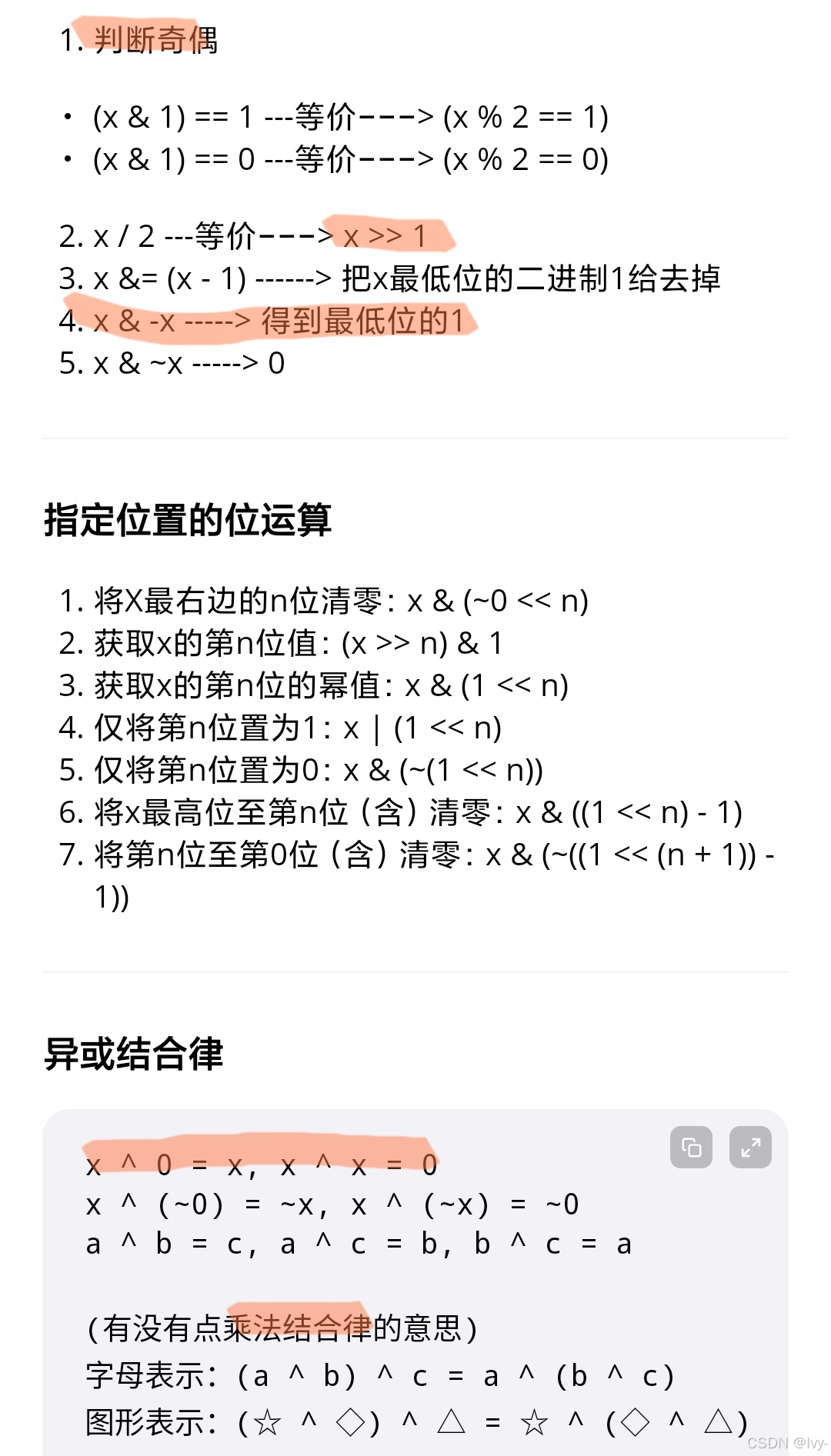?
lc701.二叉搜索樹插入
void dfs不行
TreeNode* dfs,帶接受參數處理的dfs
當為空的時候,就可以添加插入
if (!root)
? ? ? ? ?{
? ? ? ? ? ? return new TreeNode(val);
? ? ? ? }
插入位置
root->left = insertIntoBST(root->left, val);
class Solution {
public:
? ? TreeNode* insertIntoBST(TreeNode* root, int val)?
? ? {
? ? ? ? // 若根節點為空,直接創建新節點作為根
? ? ? ? if (!root)
? ? ? ? ?{
? ? ? ? ? ? return new TreeNode(val);
? ? ? ? }
? ? ? ??
? ? ? ? // 根據值的大小決定插入左子樹還是右子樹
? ? ? ? if (val < root->val)?
? ? ? ? {
? ? ? ? ? ? root->left = insertIntoBST(root->left, val);
? ? ? ? }?
? ? ? ? else?
? ? ? ? {
? ? ? ? ? ? root->right = insertIntoBST(root->right, val);
? ? ? ? }
? ? ? ? return root;
? ? }
};
聯想:
有序合并兩個鏈表
l1->next=merge(l1->next,l2);
return l1;
?
lc61.鏈表分割點
class Solution {
public:
ListNode* rotateRight(ListNode* head, int k) {
if(!head || !head->next)
return head;
int n=0;
ListNode* tmp=head;
while(tmp)
{
n++;
tmp=tmp->next;
}
k=k%n;
if(k==0) return head;
ListNode* cy=head;
int flag=n-k;
int cnt=0;
ListNode* a;
ListNode* b;
while(head)
{
cnt++;
if(cnt==flag)
{
a=head;
b=head->next;
break;
}
head=head->next;
}
a->next=nullptr;
ListNode* newhead=b;
while(b->next)
{
b=b->next;
}
b->next=cy;
return newhead;
}
};
?
?
迭代器
對比于for循環
for循環一般是以特定順序循環,迭代器是以特定遍歷規則去訪問集合中每個元素,不嚴謹地來說,可以認為for的概念范圍比迭代器小,參考 迭代器模式 ?
不能用for循環遍歷一個 紅黑樹 ?或hash鏈表之類,迭代器是對所有可遍歷數據結構的抽象和封裝。
map
在C++中,?std::map?是有序集合,其內部通過紅黑樹實現,會按照鍵(key)的升序自動排序。
獲取?std::map?最后一個元素的方法:
- 使用?rbegin()?函數,它返回指向最后一個元素的反向迭代器,例如:?auto last = map.rbegin();?
- 通過?*last?可訪問該元素(鍵值對),通過?last->first?獲取鍵,?last->second?獲取值。
?
lc82.鏈表刪重
引入flag
return前處理:
newhead->next=nullptr; //截斷尾部可能的殘留
class Solution {
public:
ListNode* deleteDuplicates(ListNode* head)
{
if(!head || !head->next)
return head;
ListNode* newhead=new ListNode(0);
ListNode* ret=newhead;
int flag=-1000;
while(head)
{
if(head->next && head->val==head->next->val)
flag=head->val;
if(head->val!=flag)
{
newhead->next=head;
newhead=newhead->next;
}
head=head->next;
}
newhead->next=nullptr; //截斷尾部可能的殘留
return ret->next;
}
};
?
lc190 位運算

?class Solution {
public:
uint32_t reverseBits(uint32_t n) {
uint32_t result = 0;
for (int i = 0; i < 32; ++i)
result = (result << 1) + (n >> i & 1);
return result;
}
};

lc2044.子集按位或
計算最大按位或的子集數量
class Solution {
public:
int countMaxOrSubsets(vector<int>& nums) {
int max_or = 0;
int count = 0;
int n = nums.size();
// 遍歷所有子集(共2^n個)
for (int mask = 1; mask < (1 << n); ++mask) {
int current_or = 0;
for (int i = 0; i < n; ++i) {
if (mask & (1 << i)) {
current_or |= nums[i];
}
}
// 更新最大或值和計數
if (current_or > max_or)
? ? ? ? ? {
max_or = current_or;
count = 1;
}
? ? ? ? ? ?else if (current_or == max_or)
? ? ? ? ? ?{
count++;
}
}
return count;
}
};
主要修改說明:
1.聚焦子集按位或計算
2.?使用位運算遍歷所有非空子集(掩碼?mask?從1開始,避免空集)
3.?計算每個子集的按位或值,追蹤最大值并統計出現次數
4.?時間復雜度O(n·2?),適用于n≤20的場景(題目隱含約束)
?
)
)
 視頻教程 - 微博內容IP地圖可視化分析實現)




)






,巨人網絡(SZ:002558))




